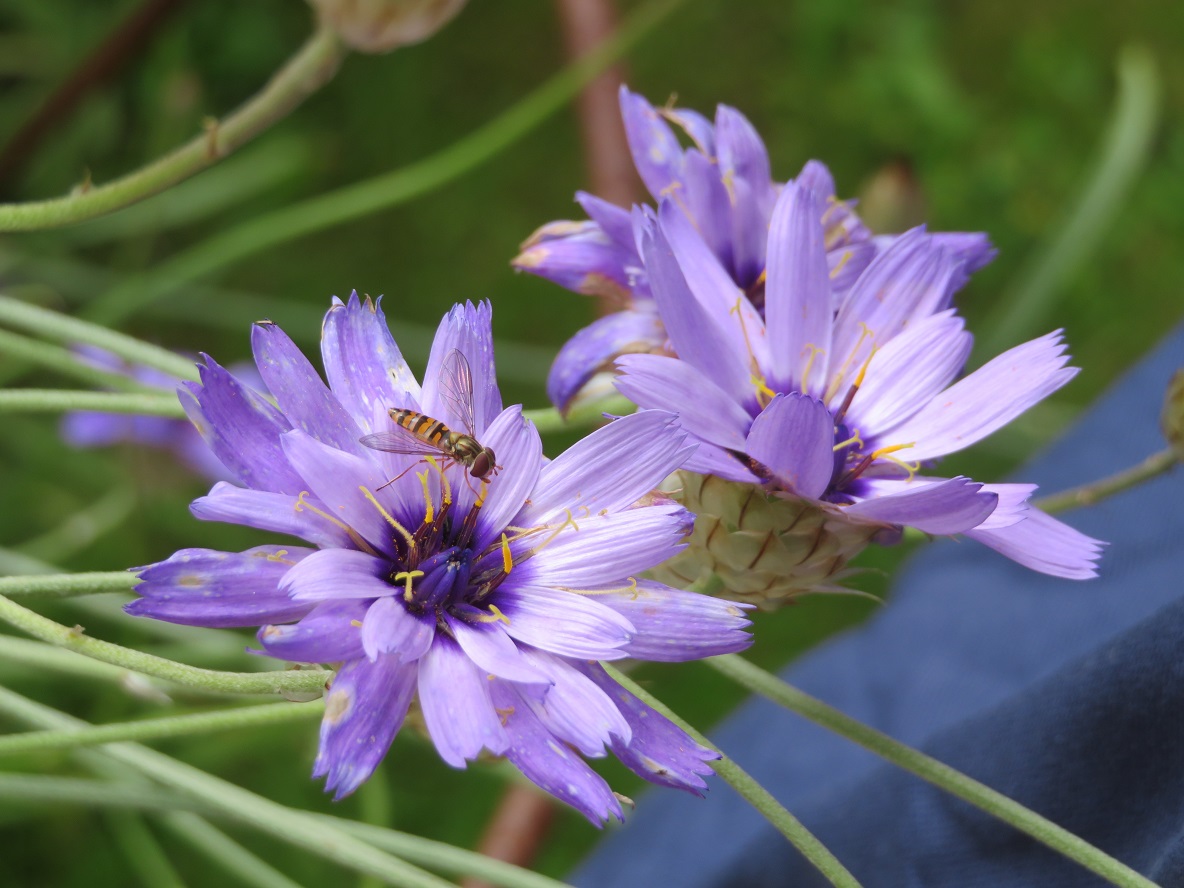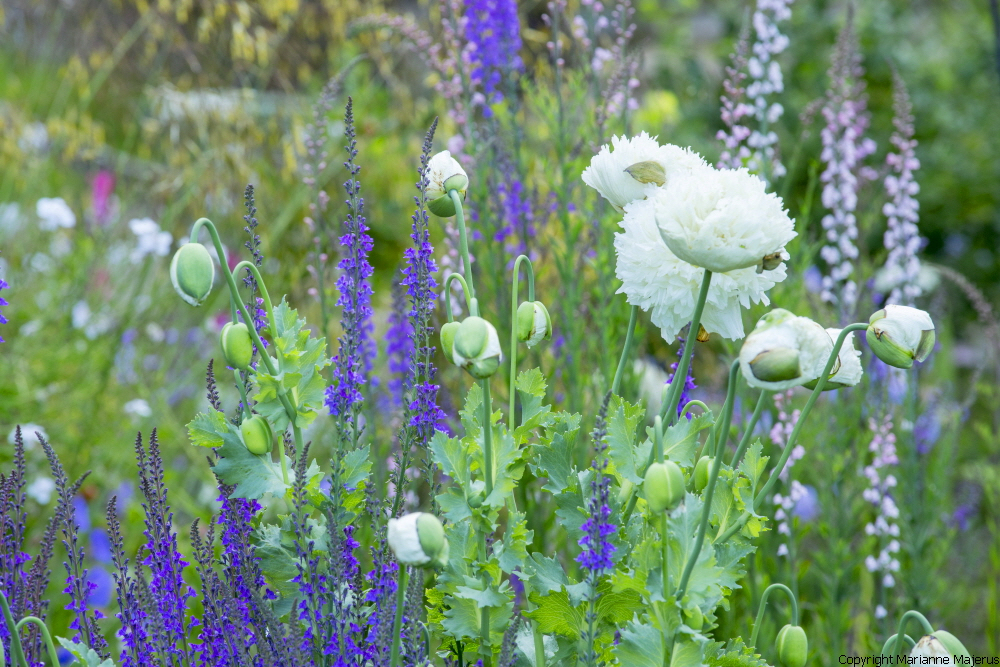
I’ve got two daughters, Frances and Zoe, and Frances used to spend many a happy hour trying to do tricks with her Paul Daniels’ magic set. She’d arrive, complete with cape, top hat and wand, and then she’d entertain us with varying degrees of success whilst we tried to take it seriously. That was the mid-1980s, although it only seems like yesterday! Gardening’s pretty magical too and the most magical thing of all is growing something from seed and I’ve never got over the fact that a tiny speck can grow into a plant.
Having a greenhouse provides the perfect environment for some magical seed sowing and it’s easier than you think. On the practical side you need seed-sowing compost, because this is low in nutrients. Your seed trays and pots need to be really clean, to prevent fungal disease, and a sunny day in winter is the best time for getting out the washing up bowl. I prefer half-sized seed trays, because they’re more manoeuvrable, and round pots rather than square ones. Square pots fit together better, but the corners harbour excess water and seeds need careful watering because they hate cold, claggy compost. The compost needs to be moist but not wet.
It’s worth investing in a good watering can with a fine rose and the most useful cans I have are made by Haws. The rose, the sprinkler bit on the end of the arm, is the most important. It should deliver a fine spray and the holes should be pointing upwards to emulate fine rain – not a deluge. The water needs to come from the tap, not the water butt, to lessen the chance of fungal disease being spread. When you empty your can, fill it up from the tap straightaway and allow it to stand in the greenhouse. This will allow any chlorine to evaporate and the water will also come up to temperature. If only I could train the Best Beloved!
The secret ingredient is patience and I’ve learnt this the hard way! Forty years ago I sowed some Cyclamen coum seeds in spring. They hadn’t germinated by the autumn so I tipped the lot onto the garden. Two years later I noticed that I had lots of cyclamen plants. Like a lot of seeds, cyclamen needs a period of striation or a cold shock, and many seeds take their time. Nurseryman often put their pots of seed in the fridge for six weeks to create the cold shock, although I’m not sure how their wives feel about that.
Most perennials set seeds between May and September and most of those seeds will not germinate until the following spring. However it’s still better to get the seeds into the compost between May and September. Hard-cased seeds, such as lupins and peonies, store for many a year and some seeds have inhibitors to prevent rapid germination. Some peony seeds have a red covering and this needs to be removed. The slowest seeds I’ve ‘magicked’ into plants are trilliums and peonies. Peonies take four years to flower and it took me seven years to get a flower on my trillium seedling. It was more exciting than giving birth!
The buttercup family, or Ranuculaceae contains some of our favourite garden plants and they include hellebores, clematis, anemones, trollius and aconitums. They need special handling. Seeds from these plants should be sown as soon as they ripen, because they’re only viable for a short time. Winter aconites (Eranthis hyemalis) spread by setting seeds and these seeds are unusual because they don’t turn black. They need to be collected when there are a light-brown, or you can leave them in situ.
The easiest seeds of all are annuals and biennials. Annuals live for a year and biennials for two. They flower and then fade away, so they rely on setting seed to survive. They have secret weapon: they produce lots of nectar so annuals and biennials are some of the most bee-friendly flowers you can grow. Hardy annuals are definitely the easier of the two because you can sow these in trays in March or April and they’ll come up within 14 days. You can also sprinkle them straight onto the ground in late-May, but you are at the will of the weather. Last year none of the seeds I sprinkled about germinated in the ground, but they’ve overwintered they’re popping up this year instead.
Some seeds have to be sown straight in the ground and these include Larkspur ( Delphinium consolida) and Bells of Ireland (Moluccella laevis) because they resent disturbance. I find that larkspur needs a cold shock, so this is best sown into the soil early. However most hardy annuals are amenable to being pricked out as long as you handle them by the seed leaves and not the stem.
Some annuals are less than hardy in my garden relies on Cosmos and annual scabious for late summer colour in the peony and rose borders. These seeds are also sown in March although they do get fleeced on cold nights. I also grow antirrhinums, or snapdragons, from seed and these can damp off, so water carefully. Annuals can be deadheaded in June, July and August and this will keep them in flower for much longer. One of the most useful annuals is the blue cornflour (Centaurea cyanus) and the red-tailed bumblebees go for this more than any other flower. The blue form is a good partner for orange calendulas and marigolds.
It’s a good idea, once September comes, to stop deadheading some of your annuals to allow seeds to form. These seeds can be collected, cleaned and then stored in a tin until the following spring. The critical thing is to only collect ripe seed on fine days. Midday is usually best, because the plants are usually completely dry.
Large A4 envelopes come in useful, or brown paper bags, and it’s also a good idea to add a clearly written label as you harvest. Calendulas, cornflowers, scabious, nasturtiums, cosmos and African marigolds are all easy to harvest. These all get sown in spring. Biennials, such as wallflowers, foxgloves and sweet Williams, are usually best sown in June and they germinate quite quickly too. Bed them out into the garden in September, if they’re large enough, and they will form rosettes in winter.
Perennial plants need more time so they won’t be popping up in days. They are best sown as soon as the seeds are ripe, if you’re collecting your own. If you’re buying packets of seeds I prefer to sow perennials in autumn because many of these plants need a cold shock. Annual umbellifers, such as Ammi majus, Ammi visnaga and Orlaya grandiflora, are also better if autumn sown. They make bigger and better plants.

Certain perennials can be sown in spring and will often flower in the same year and these can be very useful gap fillers. Echinacea purpurea ‘Magnus’ and ‘White Swan’ are both easy to grow if the seeds are sown in early March and then pricked out. Sometimes they flower in the first year and sometimes in the following year. Gaura lindheimeri, sometimes called whirling butterflies, is easy to grow from seed and this is an extremely useful perennial because it provides late flower. Often it’s the last perennial left standing and the soft-white flowers have a touch of pink so it never looks stark.
I wouldn’t be without Cupid’s dart ( Catananche caerulea) either, because the papery buds look almost golden in the sunlight. The wiry stems begin to produce blue flowers in summer and then carry on and it’s a wonderful plant for hoverflies. I have it on a sunny corner mingling with ponytail grass (Stipa tenuissima) and a subtle, pale-pink penstemon called ‘Evelyn’. This magical combination pleases me for months on end. And I can see it from my Hartley greenhouse!



